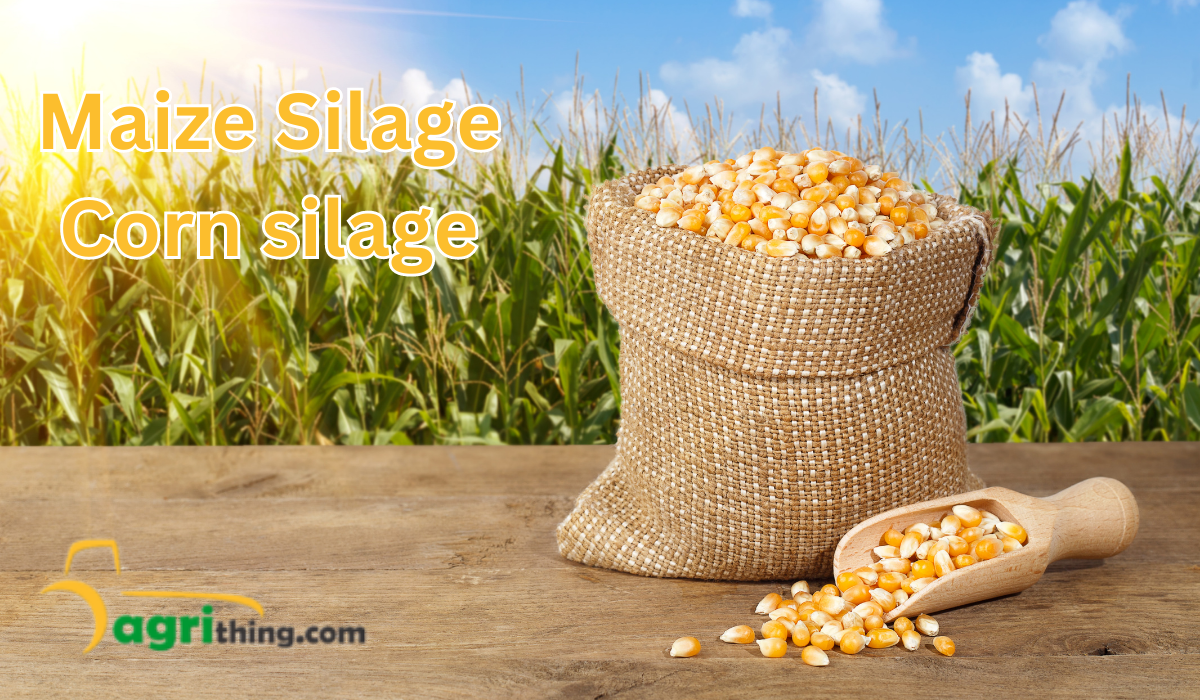Mastering Troubleshooting Corn Silage : Solutions and Expert Tips

Troubleshooting corn silage is important for making good feed for farmers. It means finding and fixing common problems in making Corn silage. This helps ensure the food has the right nutrients and is affordable for animals. In this article, we will talk about common issues in making Silo corn and give helpful solutions and tips to solve them.
Table of Contents
Introduction
Maize silage is made by collecting and fermenting the entire corn plant, including the stalk, leaves, and grain. It is a valuable food choice, especially for dairy cows, because it gives them a steady and balanced diet all year round. But, it’s important to deal with any problems that might come up while making Silo corn to ensure the food is really good.
Common Challenges in Troubleshooting Corn Silage
Ensuring Optimal Moisture Content
One important thing in making corn silage is to harvest the crop with the right amount of moisture. If harvested too early, it can be too dry, which makes the fermentation process bad and lowers its nutritional value. But if it’s harvested too late, it can be too wet, which can cause leaking, rotting, and mold to grow.
Achieving Proper Fermentation
Getting the fermentation right is important for keeping the nutrients and getting the most energy out of Maize silage. If it ferments enough, the food is easier for animals to digest, and they will perform better. To ensure the fermentation is the best, removing oxygen and creating a place with no air when storing the silage is important.
Reducing Aerobic Spoilage
Aerobic spoilage happens when oxygen gets into the silage and lets spoilage microorganisms grow. This can make the silage heat up, lose nutrients, and not taste as good. To prevent this, it’s really important to pack and seal the silage properly. That way, oxygen can’t get in, and the risk of aerobic spoilage is reduced.
Managing Mycotoxin Contamination
Fungi create dangerous mycotoxins that can infect corn silage, endangering farm animals. Contamination happens when crops are not well-taken care of or when the weather is bad. To stop mycotoxin contamination, storing and distributing corn properly is vital.
Solutions to troubleshooting Corn Silage
Harvesting at the Right Moisture Level
Harvesting the crop when the moisture level is right is important to get the best quality corn silage. You can figure this out by regularly checking the moisture content using a reliable testing method like the kernel milk line or a moisture meter. Harvesting at the correct moisture level helps with proper packing density and encourages beneficial fermentation.
Using Effective Inoculants
Inoculants are substances with healthy bacteria that help start and improve Maize silage fermentation. They can make silage more stable, keep more nutrients, and reduce bad chances. Choosing the right inoculant for the situation and following the manufacturer’s instructions can really help the fermentation process work better.
Implementing Proper Packing and Sealing Techniques
It’s really critical to tightly pack the silage and seal it well to prevent oxygen from getting in and avoid spoilage caused by air. Using high-quality equipment like a tractor with a packing attachment can help you pack it tightly. Also, covering the top of the silage with a special film that keeps out oxygen and using the right weights to hold it down will ensure it’s sealed properly.
Ensuring Proper Feed out Management
Managing how you take out Maize silage is crucial to keeping it from going bad and ensuring food quality. It’s crucial to take it out evenly from the front and not leave it exposed to the air for too long. Putting a plastic sheet or a special cover on the silage left after putting out what you need can also help stop it from going off.
Tips for Successful Troubleshooting Corn Silage
Soil Fertility and Crop Selection
To grow healthy and high-yielding corn crops, it’s critical to keep the soil fertile by testing it regularly and managing nutrients properly. Choosing corn varieties that have suitable traits for farming, resist diseases, and produce high-quality forage is also critical for making high-quality Silo corn.
Harvest Timing and Processing
Timing is critical for Maize silage harvests. Harvesting too early or too late can affect nutrients and fermentation quality. Checking the maturity of the corn crop using visual cues and reliable indicators can help decide the right time to harvest. It’s also important to process the crop properly, like breaking down the kernels for better digestion.
Storage and Preservation Methods
To keep feed quality high, it’s important to store and preserve it correctly. Making sure you have enough space in the bunker or silo, packing the feed properly, and regularly checking and fixing storage structures are all necessary. It’s also important to limit air exposure and protect the surface of the feed from the weather to maintain its quality.
Monitoring and Testing for Quality Control
It’s critical to regularly check and test corn silage during production to ensure the feed is safe and to catch any problems. Sampling the silage to check its moisture, fermentation, and mycotoxin levels can help us understand how to make it better. We can also fix any issues so the feed stays top-notch.
Conclusion
Corn silage troubleshooting challenges is crucial for high-quality feed. Fixing issues and using effective solutions ensures nutritious, affordable animal feed. Key areas to focus on: moisture level, fermentation, spoilage, and contamination. Employing reliable testing, proper packing, and feed-out management improves production. By following guidelines and adjusting, farmers produce top-notch feed for optimal animal performance.
Frequently Asked Questions (FAQ’s)
What are common challenges in troubleshooting corn silage ?
Weather risks, moisture content management, fermentation optimization, storage conditions, and spoilage and mold growth prevention are common challenges in Silo corn production.
How do you identify mold in troubleshooting corn silage ?
Common methods to identify corn silage troubleshooting contain visually inspecting for visible mold growth, checking for a musty smell, looking for signs of heating, and observing any changes in texture or color.
What is the ideal moisture content for corn silage?
Silo corn should ideally have a moisture content of around 60% to 70%.
How can I prevent aerobic spoilage in corn silage?
To keep Maize silage fresh and prevent spoilage, it’s important to compact it well, seal it tightly, and maintain suitable storage conditions. This means keeping oxygen out and ensuring low temperatures.
What are the signs of poor fermentation in corn silage?
If Maize silage undergoes poor fermentation, you may notice certain signs. These include a sweet or alcoholic smell, excessive heating, a slimy or sticky texture, and yeasts or molds.
Related Articles
Want to purchase top-quality silage? Visit our Agricomplex website to explore our wide range of silage products.
People Also Asked
What is the ideal moisture content for troubleshooting corn silage ?
Silo corn should have a moisture content of about 60% to 70% for best results. Harvesting within this range helps fermentation and reduces the chance of it worsening.
How can inoculants help improve Maize silage fermentation?
Inoculants have good bacteria that can make the corn silage fermentation better. They make a perfect place without air, keep more nutrients, and lower the chance of going bad.
What are the signs of aerobic spoilage in corn silage?
When corn silage starts to spoil, some signs show it has been exposed to oxygen. These signs include heating up, mold growing, a bad smell, and becoming less tasty. These signs tell us that microorganisms cause spoilage growing in it.
How can mycotoxin contamination be prevented in corn silage?
To avoid mycotoxin contamination in corn silage, storing and managing it correctly is important. This involves using tightly sealed storage structures, reducing air contact, and regularly checking the levels of mycotoxins.
How often should corn silage be tested for quality control?
Regular testing of Silo corn throughout its lifecycle enables quality control assessment and necessary adjustments, including monitoring moisture content, fermentation quality and detecting mycotoxin contamination.




Leave your comment